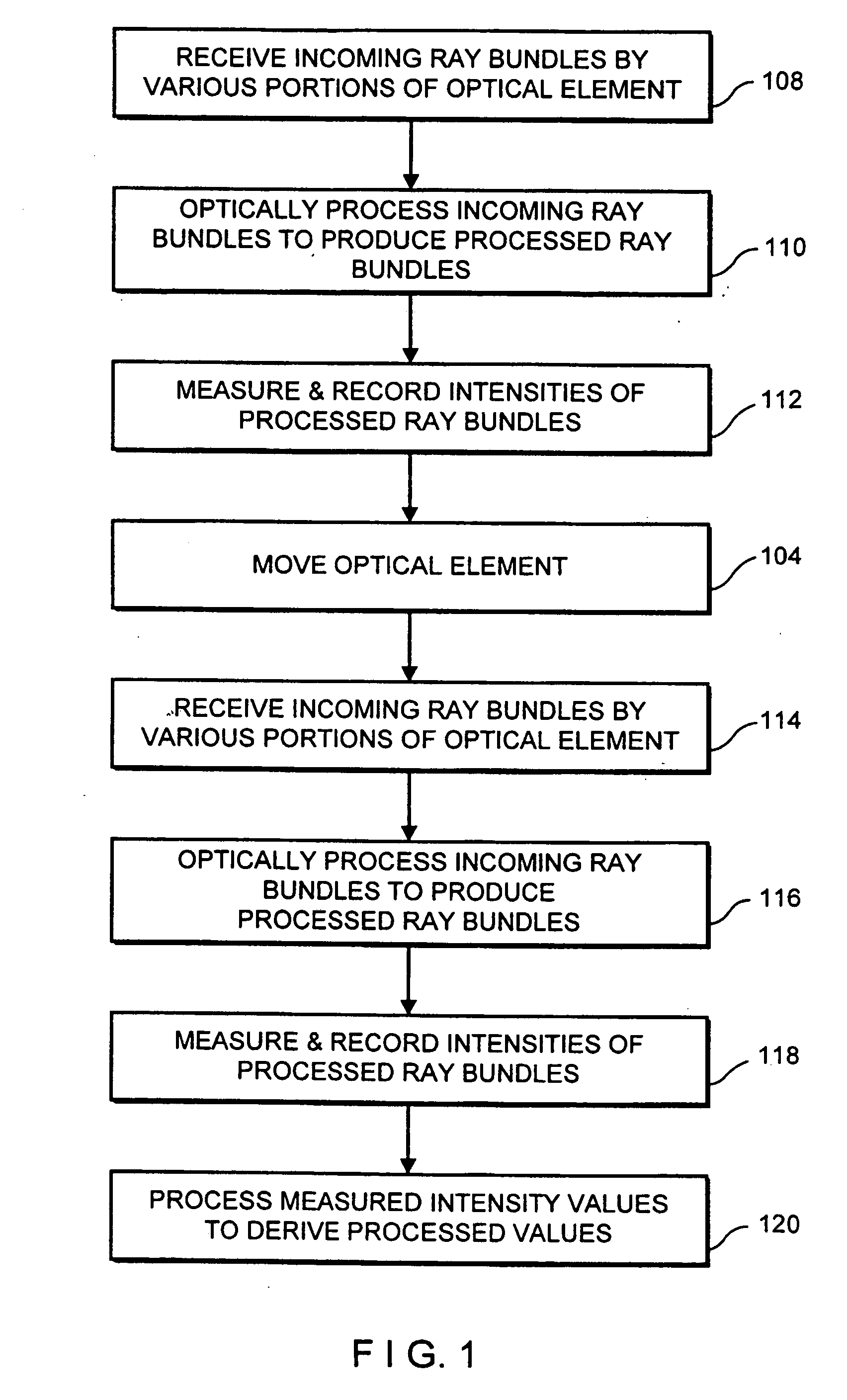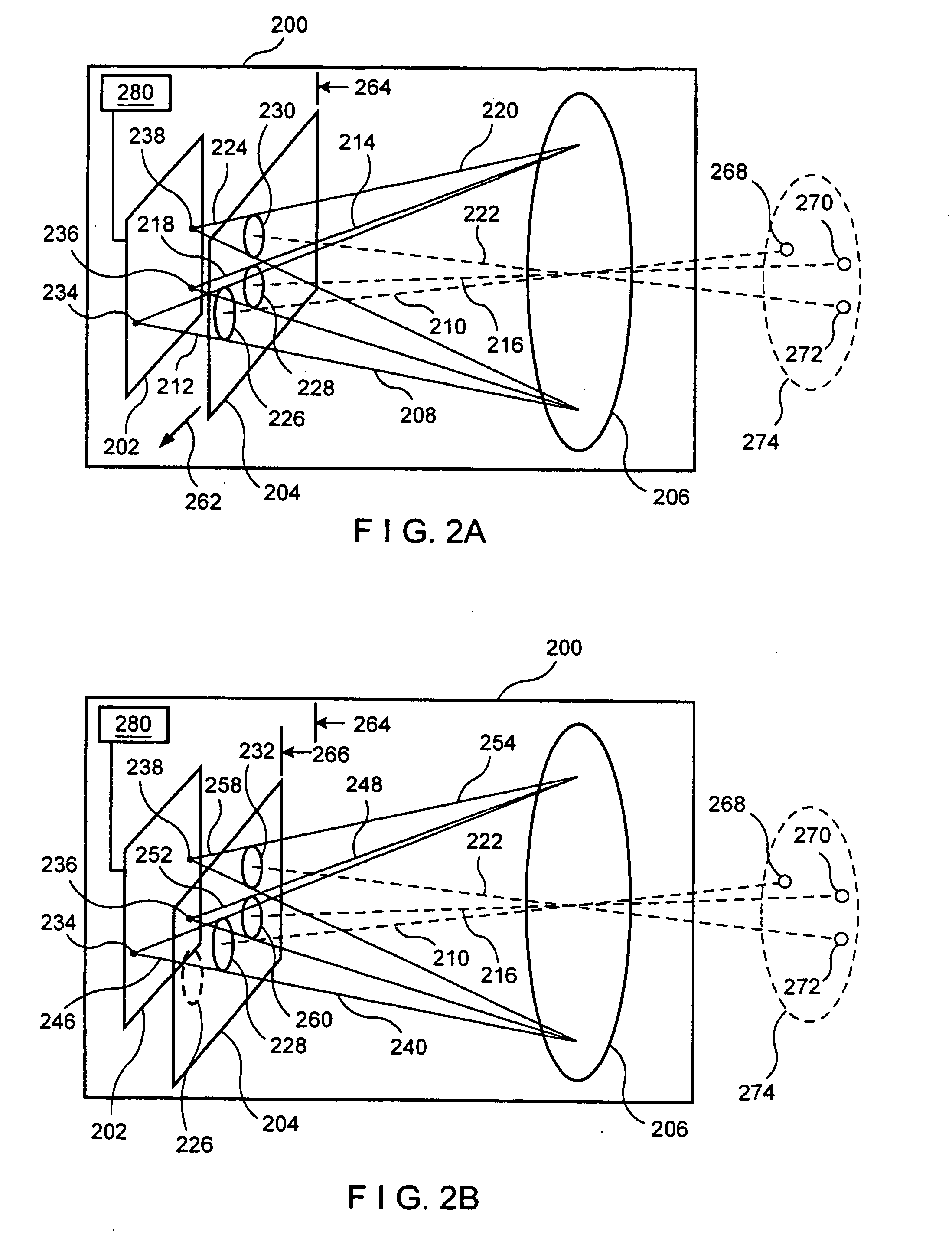Method and apparatus for recording a sequence of images using a moving optical element
a technology of moving optical elements and sequences, which is applied in the field of methods and apparatus for recording sequences of images using moving optical elements, can solve the problems of limited dynamic range for measuring brightness, color, and limited spatial resolution of typical imagers, and achieve enhanced resolution and dynamic range, and spatial resolution. enhanced
- Summary
- Abstract
- Description
- Claims
- Application Information
AI Technical Summary
Benefits of technology
Problems solved by technology
Method used
Image
Examples
Embodiment Construction
FIG. 2A illustrates schematically an exemplary imager 200 for recording images in accordance with the present invention. The imager 200 includes a lens 206, an image detector 202, and an optical element 204 which can be moved in the reference frame of the imager 200. The optical element 204 is used to process incoming radiation rays (e.g., visible light rays, infrared rays, ultraviolet rays and / or other types of radiation rays), thereby producing processed rays which are received by the image detector 202. The image detector 202 measures the intensities of the processed rays in order to produce images. The image detector 202 is preferably an electronic detector such as a charge-coupled device (CCD) array. The imager 200 is operated by recording multiple images—i.e., a sequence of image frames—while moving the optical element 204 in the reference frame of the imager 200, as is described in further detail below.
In considering the imager 200 illustrated in FIG. 2A, it should be noted ...
PUM
 Login to View More
Login to View More Abstract
Description
Claims
Application Information
 Login to View More
Login to View More - R&D
- Intellectual Property
- Life Sciences
- Materials
- Tech Scout
- Unparalleled Data Quality
- Higher Quality Content
- 60% Fewer Hallucinations
Browse by: Latest US Patents, China's latest patents, Technical Efficacy Thesaurus, Application Domain, Technology Topic, Popular Technical Reports.
© 2025 PatSnap. All rights reserved.Legal|Privacy policy|Modern Slavery Act Transparency Statement|Sitemap|About US| Contact US: help@patsnap.com



